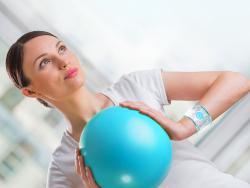 There’s no question that medical apps and software aimed at improving healthcare outcomes are hot items.
There’s no question that medical apps and software aimed at improving healthcare outcomes are hot items.
 There’s no question that medical apps and software aimed at improving healthcare outcomes are hot items. In a previous post for Popper and Company, I discussed the growth in popularity of medical apps and the FDA’s new approach toward them, showing how new technology can simultaneously empower the patient/consumer and make important health-related information easier to access.
There’s no question that medical apps and software aimed at improving healthcare outcomes are hot items. In a previous post for Popper and Company, I discussed the growth in popularity of medical apps and the FDA’s new approach toward them, showing how new technology can simultaneously empower the patient/consumer and make important health-related information easier to access.
But during one discussion at last month’s SXSW Interactive Conference in Austin, experts and innovators alike underscored a more important consideration: How well do any of these inventions interact with patients and consumers?
Changing how people take care of themselves (e.g., taking prescriptions, diet, adequate exercise) has been very difficult. Many of today’s chronic illnesses are largely the long-term consequence of lifestyle choices and behaviors, which are theoretically easier to change than, say, exposure to cholera. However, studies on the effectiveness of behavioral change programs have not been optimistic—some have called the attempts an outright failure, while others diplomatically claim that behavioral interventions have no empirical evidence of their success.
To look for a better way, four panelists at SXSW talked about how their technological innovations might have a fighting chance of changing behaviors. Their suggestions from experience follow:
- Cash is king. Yifan Zhang, CEO and co-founder of PACT, said the company’s wellness app is enjoying 90 percent success rates and consumer retention between six months and a year. Zhang says this is due to cash rewards and fines. Customers set a number of wellness goals and pay into the PACT pool if they miss those goals. Alternately, they’re rewarded from the same pool if their goals are met. Due to PACT’s impact, they are now working with several self-insured employers and wellness programs.
- Delight with simplicity. PillPack is a new company that uses innovative, customized packaging (IDEO helped the company with design on this project) to make it easy for patients to take their pills, said co-founder and CTO Eliot Cohen. Each patient receives a tape of sealed packages with the right dosage of every prescription inside, clearly labeled with when to take the medications. Cohen said the key to PillPack’s success so far is focusing on what is important to the customer with medication adherence and improved health outcomes being awesome side effects.
- Beauty in wearables. Wearable sensor technology is a blooming area, but many innovations get bogged down by poor design or software that isn’t convenient (or may even measure the wrong things). Jawbone’s head of business development Andrew Rosenthal is looking at not only making “something beautiful to wear,” but also making sure the devices tell patients what they want to hear. From his experience developing a diabetes-tracking app at Massive Health (prior to acquisition by Jawbone), he learned that patients don’t want to be bogged down with large amounts of data. Rosenthal told us, “Most just want to know, ‘Am I on the right track or not?’”
- Data minding, data mining. While working on the Blue Button initiative, Ryan Panchadsaram, Senior Advisor to the CTO of The White House, found that many concerns those in the healthcare industry had with regards to allowing patients full access to their health records have not panned out. Right now the program can monitor how many times patients view or download their data, but Panchadsaram is really interested in what patients will do with their data to ultimately alter their health. The key to making more progress in this initiative is to develop better standards for structured data.
Changing health behaviors requires everybody to be involved. While software or devices can make change easier, what’s needed more than any other factor is the meaningful interaction between providers and patients. If the innovation is easier–even fun–for patients to use and gives valuable information to both doctor and consumer, then we might finally arrive at solutions that result in real health behavior change.
(technology & health behaviors / shutterstock)










